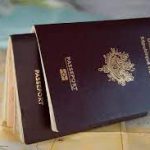Are you a Vietnamese national dreaming of exploring the vibrant colors, rich history, and cultural wonders of India? Well, we have great news for you! The Indian visa application process is now smoother than ever before. Whether you’re planning an unforgettable vacation or embarking on a business venture, this blog post has got your back! We’ve curated the top tips and tricks that will guide you through every step of the way, ensuring a hassle-free Indian visa application experience. So grab your pen and paper because we’re about to unveil all the secrets to make your journey from Vietnam to India as smooth as silk! INDIAN VISA FOR VIETNAMESE CITIZENS
Understanding the Types of Visas Available for Vietnamese Nationals
Vietnamese nationals planning to travel to India for work, study, or tourism purposes will need to apply for an Indian visa. The process of obtaining a visa can be daunting and confusing, especially for first-time applicants. One of the crucial steps in this process is understanding the types of visas available for Vietnamese nationals.
There are various types of visas that Vietnamese nationals can apply for depending on their purpose of travel and duration of stay in India. These include:
1. Tourist Visa: This type of visa is issued to individuals who wish to visit India for leisure or tourism purposes. It is valid for a maximum stay period of 90 days with single or multiple entries allowed.
2. Business Visa: This visa is granted to those who intend to visit India for business-related activities such as attending meetings, conferences, or exploring potential business opportunities. The duration of stay allowed under this visa category varies from 6 months to 10 years.
3. Employment Visa: For Vietnamese nationals planning to work in India, an employment visa is required. This type of visa allows them to stay and work in the country for a specific period as determined by the Indian authorities. INDIAN VISA FOR ZAMBIAN CITIZENS
4. Student Visa: Students from Vietnam seeking admission into Indian educational institutions must obtain a student visa before their arrival in the country. The validity period depends on the duration of the course but can be extended upon request.
Step-by-Step Guide to Applying for an Indian Visa
Applying for an Indian visa can seem like a daunting task, especially for Vietnamese nationals. However, with the right information and guidance, the process can be smooth and hassle-free. In this section, we will provide you with a step-by-step guide to help you navigate through the Indian visa application process.
Step 1: Determine your visa type
The first step in applying for an Indian visa is to determine the type of visa you need. There are various categories of visas available based on the purpose of your travel such as tourist, business, employment, student or medical. It is essential to choose the correct category as each one has specific requirements and documentation.
Step 2: Gather necessary documents
Once you have determined the type of visa you need, it’s time to gather all the necessary documents. The required documents may vary depending on your chosen visa category. However, some general documents that are commonly required include a valid passport with at least six months validity remaining and two blank pages for stamping purposes, recent passport-sized photographs, proof of accommodation in India (hotel reservation or invitation letter from a host), and proof of sufficient funds for your stay in India.
Preparing necessary documents
Before beginning the process of applying for an Indian visa, it is important to gather and prepare all the necessary documents. This will help ensure a smooth and hassle-free application process, saving you time and preventing any delays or rejections.
1. Passport:
The first and most crucial document required for an Indian visa is a valid passport with at least 6 months validity from the date of travel. Make sure your passport has enough pages for the visa stamp and that all your personal information is correct and up-to-date.
2. Visa Application Form:
Next, you will need to fill out a visa application form which can be downloaded from the official website of the Indian Embassy in Vietnam or obtained from their office directly. The form must be filled out accurately with no mistakes or discrepancies.
3. Photographs:
Two recent passport-sized color photographs with a white background are required for your visa application. The photographs should not be more than six months old and should have been taken without glasses, hats or headgear (unless worn because of religious beliefs).
4. Proof of Travel Arrangements:
You will need to provide proof of your travel arrangements, such as flight tickets, hotel bookings, tour itinerary etc., as part of your visa application. This shows that you have a genuine reason for traveling to India and intend to return within the specified period.
Filling out the online application form
Filling out the online application form is a crucial step in the Indian visa application process for Vietnamese nationals. This is because the information provided on the application form will determine whether or not you are eligible for a visa and what type of visa you can apply for.
To ensure a smooth and successful application process, here are some top tips and tricks to keep in mind when filling out your online application form:
1. Gather all necessary documents beforehand: Before starting your online application, make sure you have all the required documents ready. This includes your passport, recent passport-sized photographs, flight itinerary, hotel bookings, and any other supporting documents based on the type of visa you are applying for.
2. Use only correct and up-to-date information: It is essential to provide accurate and up-to-date information on your application form. Any discrepancies or incorrect details can lead to delays or even rejection of your visa. Make sure to double-check all the information before submitting your form.
3. Read instructions carefully: The online application form may seem straightforward, but it is crucial to read through all instructions carefully before filling it out. This will help avoid any mistakes that could potentially cause issues with your visa processing.
4. Provide complete information: The Indian government has strict requirements for visa applications, so it is essential to provide complete information on your online form. Be sure to fill in all mandatory fields marked with an asterisk (*) and include as much detail as possible.


